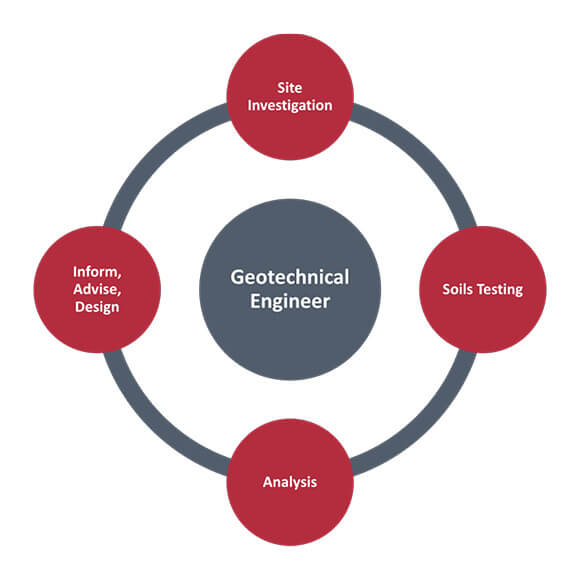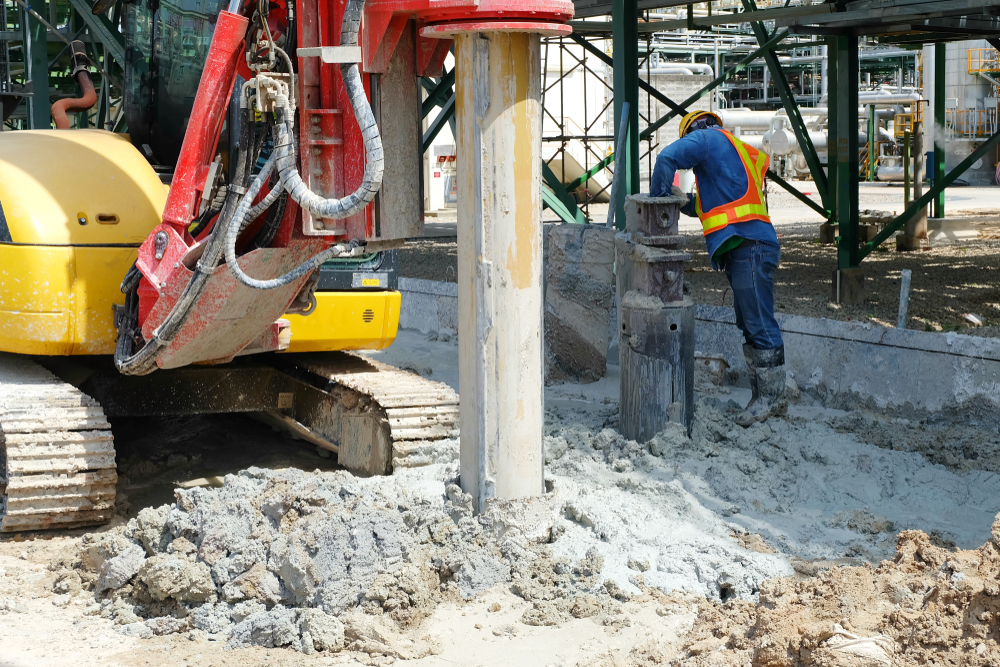Getting The Geotechnical Engineering For Construction Projects To Work
All about Geotechnical Engineering For Construction Projects
Table of ContentsThe 25-Second Trick For Geotechnical Engineering For Construction ProjectsThe Main Principles Of Geotechnical Engineering For Construction Projects The Definitive Guide for Geotechnical Engineering For Construction ProjectsGeotechnical Engineering For Construction Projects Can Be Fun For EveryoneThe Best Strategy To Use For Geotechnical Engineering For Construction Projects
Throughout the examination, it is vital to drill at the called for depth and the required number of holes as per the referral of the Canadian Structure Design standard. In some cases, the owner may save some Geotechnical Investigation price however finish up spending more than the expected during the building price.The obligations of the geotechnical expert involve offering material screening for construction support. Geotechnical Engineering for Construction Projects. Geotechnical designers evaluate all the area examination reports to make certain that building is taking place based on the task specification. Throughout construction, a confirmatory examination for dirt compaction is done on-site to ensure that no future negotiation occurs
After the concrete is poured -7 days and 28 days- examinations are performed on concrete samples collected from the website to make sure that the concrete put satisfies the layout criterion. Asphalt core is taken after the Asphalt is laid and compacted to validate that it fulfills the design requirement. All research laboratory test reports are evaluated by the Geotechnical Designer to make sure that it fulfills the task spec.
Not known Facts About Geotechnical Engineering For Construction Projects

Geotechnical design plays an essential role in making certain the stability of construction tasks. Discover exactly how it influences design and general job success. Geotechnical engineering is a vital branch of civil design that focuses on recognizing the practices of earth products, such as dirt and rock. It includes evaluating subsurface conditions to guarantee that a structure's structure or framework is stable and secure.

For a trusted foundation and a smooth building and construction procedure, depend supply the know-how you need. Contact to get expert recommendations and geotechnical solutions customized to your next project.
The 9-Minute Rule for Geotechnical Engineering For Construction Projects
When embarking on a land development job, recognizing the ground under your feet is as crucial as the frameworks you plan to develop over it. Our Geotechnical Design team analyse the ground, ensuring it appropriates for the recommended growth while supplying you with the details required to meet your project goals.
Geotechnical Engineering checks out the development of the ground, as it is the building blocks for all projects. Where structures need to be made relative to the ground conditions; ground conditions (e.g., soft ground) may require strengthening depending upon the dimension of the intended structure. Before structure, you require to find out about the groundwater, soil framework, and liquefaction chance of your land.
For websites that are not attached on the neighborhood authority framework added site investigations would certainly be required to offer technological inputs for on-site stormwater and wastewater. We have experienced Geotechnical Designers based in each office, sustaining your geotechnical needs across the country. Connect to us to talk about how we can sustain your next task.
These records are tailored to satisfy the details requirements of a project and consist of layout specifications and guidance for the building of an array of manufactured structures. As well as giving working as a consultant services covering locations such as slope security and load-bearing capabilities for various products, these engineers undertake r & d activities to enhance techniques, equipment, materials expertise and evaluation covering entire lifecycles.
Geotechnical Engineering For Construction Projects for Beginners

Prices of pay generally enhance as your understanding and skills expand, with guidelines directing to a graduate starting salary of between 18,000 and 28,000 per year in the UK. This rises to 26,000 to 36,000 with a couple of years of experience and after that getting to 40,000 to 60,000+ for elderly, chartered or master engineers.
However, with the best application it is possible to grasp the profession and gain entry to a challenging yet learn the facts here now satisfying and essential career. A geologist would certainly require to retrain to come to be a geotechnical engineer, although there is lots of cross-over between the 2 occupations, which might make this much easier - Geotechnical Engineering for Construction Projects. Geologists require to have an understanding of dirts, rocks and other materials from a clinical point of view, while geotechnical designers tale their knowledge of matters such as soil and rock technician, geophysics and hydrology and apply them to engineering and ecological projects
When beginning, these engineers will have a tendency to deal with less intricate jobs, building up expertise and experience all set navigate to this site for even more difficult job later on. Geotechnical designers have a tendency to be experts in specific locations as they grow in experience, concentrating on specific frameworks such as railways, roadways or water. These engineers likewise deal with renewable energy, offshore and onshore oil and gas, nuclear power, and extra.
The Facts About Geotechnical Engineering For Construction Projects Revealed
The time taken to end up being a geotechnical engineer depends on where you are based, where you study and what level of education and learning you want to attain prior to entering the work environment. Generally-speaking it takes 3-4 years to get to the fundamental demands to begin an occupation as a geotechnical designer.
These procedures allow experts to analyze a host of soil mechanics consisting of weight, porosity, void-to-solid particle proportion, leaks in the structure, compressibility, maximum shear stamina, bearing capacity and contortions. If the framework needs a deep foundation, engineers will use a cone penetration examination to approximate the quantity of skin and end bearing Full Article resistance in the subsurface.
When assessing an incline's balance of shear tension and shear strength, or its capacity to hold up against and go through movement, rotational slides and translational slides are commonly considered. Rotational slides stop working along a bent surface, with translational slides occurring on a planar surface. An expert's objective is to determine the conditions at which a slope failing could take place.
Usually, searchings for suggest that a website's soil should be dealt with to enhance its shear stamina, stiffness and leaks in the structure prior to design and building. When it comes time to outline structure plans, experts are increasingly focused on sustainability, more particularly just how to reduce a structure's carbon impact. One strategy has been to change 20 percent of a foundation's cement with fly ash, a waste item from coal fire nuclear power plant.